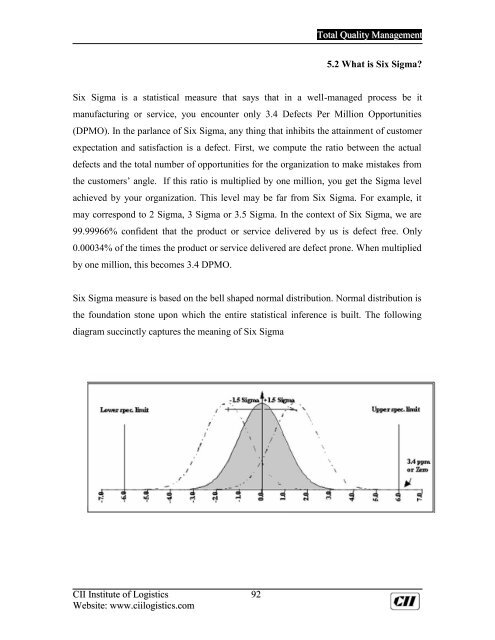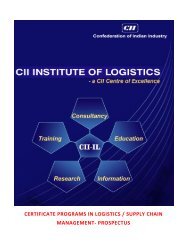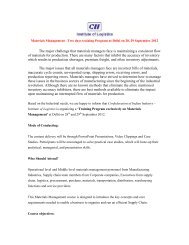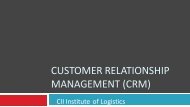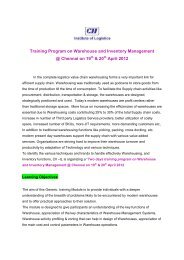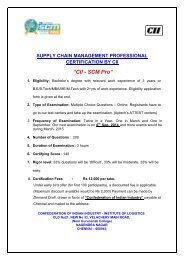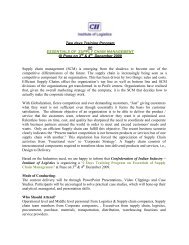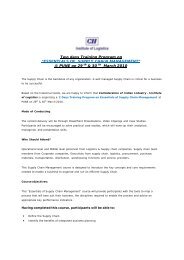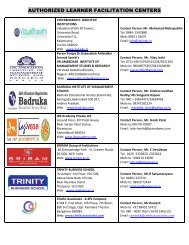Total Quality Management - CII Institute of Logistics
Total Quality Management - CII Institute of Logistics
Total Quality Management - CII Institute of Logistics
You also want an ePaper? Increase the reach of your titles
YUMPU automatically turns print PDFs into web optimized ePapers that Google loves.
<strong>Total</strong> <strong>Quality</strong> <strong>Management</strong><br />
5.2 What is Six Sigma?<br />
Six Sigma is a statistical measure that says that in a well-managed process be it<br />
manufacturing or service, you encounter only 3.4 Defects Per Million Opportunities<br />
(DPMO). In the parlance <strong>of</strong> Six Sigma, any thing that inhibits the attainment <strong>of</strong> customer<br />
expectation and satisfaction is a defect. First, we compute the ratio between the actual<br />
defects and the total number <strong>of</strong> opportunities for the organization to make mistakes from<br />
the customers’ angle. If this ratio is multiplied by one million, you get the Sigma level<br />
achieved by your organization. This level may be far from Six Sigma. For example, it<br />
may correspond to 2 Sigma, 3 Sigma or 3.5 Sigma. In the context <strong>of</strong> Six Sigma, we are<br />
99.99966% confident that the product or service delivered by us is defect free. Only<br />
0.00034% <strong>of</strong> the times the product or service delivered are defect prone. When multiplied<br />
by one million, this becomes 3.4 DPMO.<br />
Six Sigma measure is based on the bell shaped normal distribution. Normal distribution is<br />
the foundation stone upon which the entire statistical inference is built. The following<br />
diagram succinctly captures the meaning <strong>of</strong> Six Sigma<br />
<strong>CII</strong> <strong>Institute</strong> <strong>of</strong> <strong>Logistics</strong> 92<br />
Website: www.ciilogistics.com


